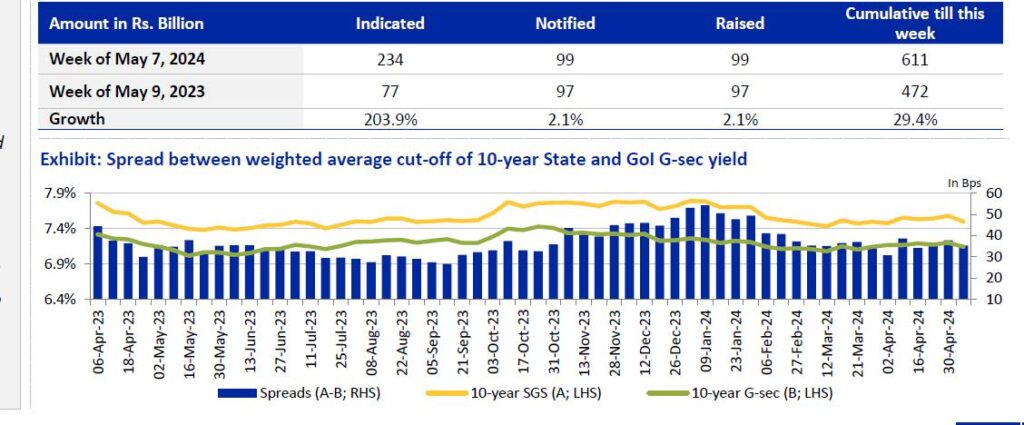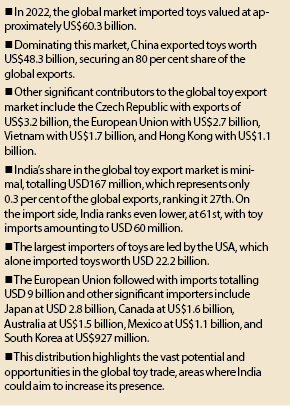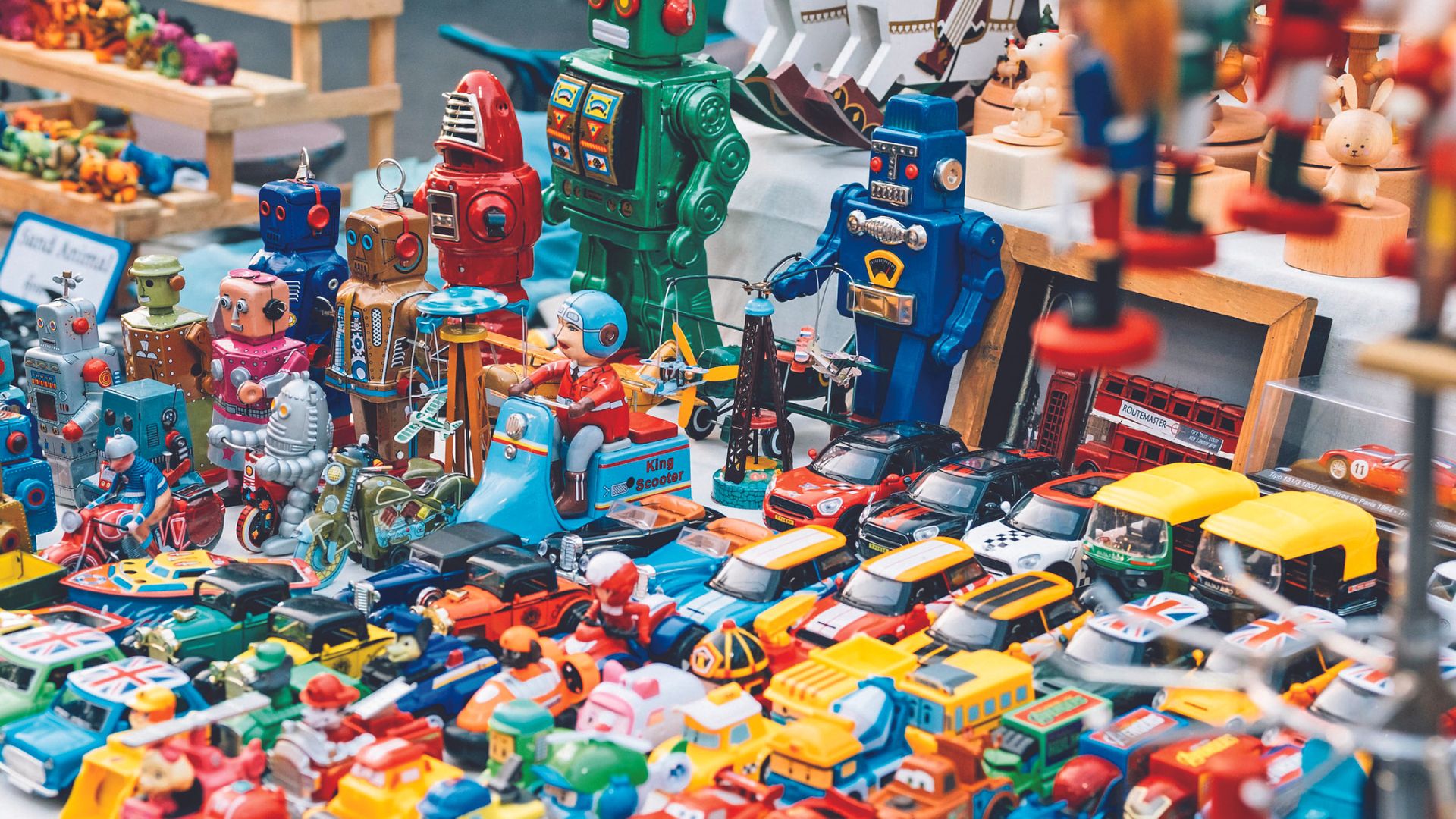The introduction of higher import duties and the Quality Control Order (QCO) has significantly impacted the toy trade in India with imports falling drastically from USD 304.1 million in FY2019 to USD 64.9 million in FY2024. Decisive steps — which include raising import duties — to curb the inflow of substandard toy imports by the Indian Government since 2020, especially from China, while simultaneously strengthening the domestic toy industry, as per a latest insight from Global Trade Research Initiative (GTRI).
The steepest decline occurred between FY2020 and FY2022, demonstrating the direct impact of the new regulations. Imports dropped from USD 279.3 million in FY2020 to USD 35.9 million by FY2022, then slightly rose to USD 62.4 million in FY2023 and USD 64.9 million in FY2024. This sharp decrease over the last four years is directly due to (QCO) measures, as per GTRI data. There was an increase in imports from other regions such as ASEAN countries, Sri Lanka, and the Czech Republic.

One of the foremost impact was that the share of imports from China dropped from 87 per cent of India’s total toy imports in FY2019 to 64 per cent in FY2024. The Indian toy industry has an estimated value of USD 3 billion in contrast, to USD100 billion of China. In FY2019, share of China was 87 per cent in India’s global imports of USD 304.1 million. In FY2024, share of China was 64 per cent in India’s global imports of USD 64.9 million. Share of other suppliers was ASEAN with 16.7 per cent, Sri Lanka with 12.4 per cent and Czech Republic contributing 4.7 per cent.
Government data quotes an IIM Lucknow case study to highlight that Indian toy industry witnessed remarkable growth in FY 2022-23 in comparison to FY 2014-15, with the decline in imports by 52 per cent rise in exports by 239 per cent and development of overall quality of the toys available in the domestic market. The study at the behest of Department for Promotion of Industry and Internal Trade (DPIIT) shows that the efforts of the Government have enabled in creation of a more conducive manufacturing ecosystem for the industry in a span of 6 years, from 2014 to 2020, which has seen doubling of the number of manufacturing units, reduction in dependence on imported inputs from 33 per cent to 12 per cent, increase in gross sales value by a CAGR of 10 per cent, and overall rise in labour productivity.
According to GTRI, Government measures which have focused on increasing import duties and introducing the QCO. India dramatically raised import duties on toys beginning in February 2020. The basic customs duty was increased from 20 per cent to 60 per cent and then to 70 per cent in July 2021, where it currently remains. This substantial increase in duties made imported toys significantly more expensive, thus creating a competitive advantage for locally produced toys. The second intervention in the form of QCO, implemented from January 2021, mandates that all toys sold in India, whether domestically produced or imported, must comply with specific Indian standards for safety.
However, according Ajay Srivastava, founder GTRI, exports did not benefit from the QCO. While the domestic measures were primarily aimed at boosting local industry and ensuring safety, they did not significantly enhance India’s toy exports. From FY2020 to FY2022, exports increased modestly from USD 129.6 million to USD177 million. However, by FY2024, exports had decreased to USD 152.3 million. India exported electronic toys worth USD 25.7 million and imported such toys worth USD 0.06 million, exported plastic dolls, metal and other non-electronic toys amounting to USD 78.74 million, while imports were at USD 18.74 million. Parts of electronic toys saw exports of USD 0.15 million and imports of USD 20.99 million. Parts of other toys category had exports worth USD 47.75 million and imports of USD 25.13 million.

The report suggests more comprehensive approach for development of toy industry with focus on developing a robust domestic ecosystem by investing in research and development to foster innovation in toy design and functionality and positioning Indian toys competitively on the global stage. The GTRI suggests strengthening partnerships between toy manufacturers and design institutes to continuously introduce innovative products and establishing specialised toy manufacturing hubs to reduce costs and increase efficiency. Modernising traditional Indian toys while preserving their cultural value to create unique products and support to small and medium enterprises in leveraging digital marketing and promoting Indian toys at international fairs to establish global connections are the other recommendations.

That apart, says Srivastava, there is need to encourage global toy brands to manufacture in India and invite international toy manufacturers who currently operate in China, such as Hasbro, Mattel, Lego, Spin Master and MGA Entertainment to consider setting up facilities in India. This move could help shift part of the global toy production market to India. There are also lessons from China like analysing and adopting best practices from Chinese manufacturers who manage a vast range of toy types and scale production efficiently. India could study the capacity to produce both low-cost and high-quality toys, handle a wide range of toy types, from simple plush toys to complex electronic gadgets and easily scale production up or down to meet the demands of international brands.
The GTRI founder also emphasises on reducing dependency on imports by developing local production capabilities for critical toy-making materials and components, such as glass eyes for dolls, beads, imitation stones, various types of plastics, electric motors and remote control apparatus will decrease costs and enhance the self-sufficiency of the Indian toy industry. Imports of inputs used for making toys is much higher than import of finished toys.

For example, India imported glass eyes for dolls or other toys, beads and imitation stones of value USD 137.2 million in FY2024. These steps aim to not only strengthen India’s position in the global toy market but also ensure a sustainable and innovative domestic industry that can meet both local and international demands.






